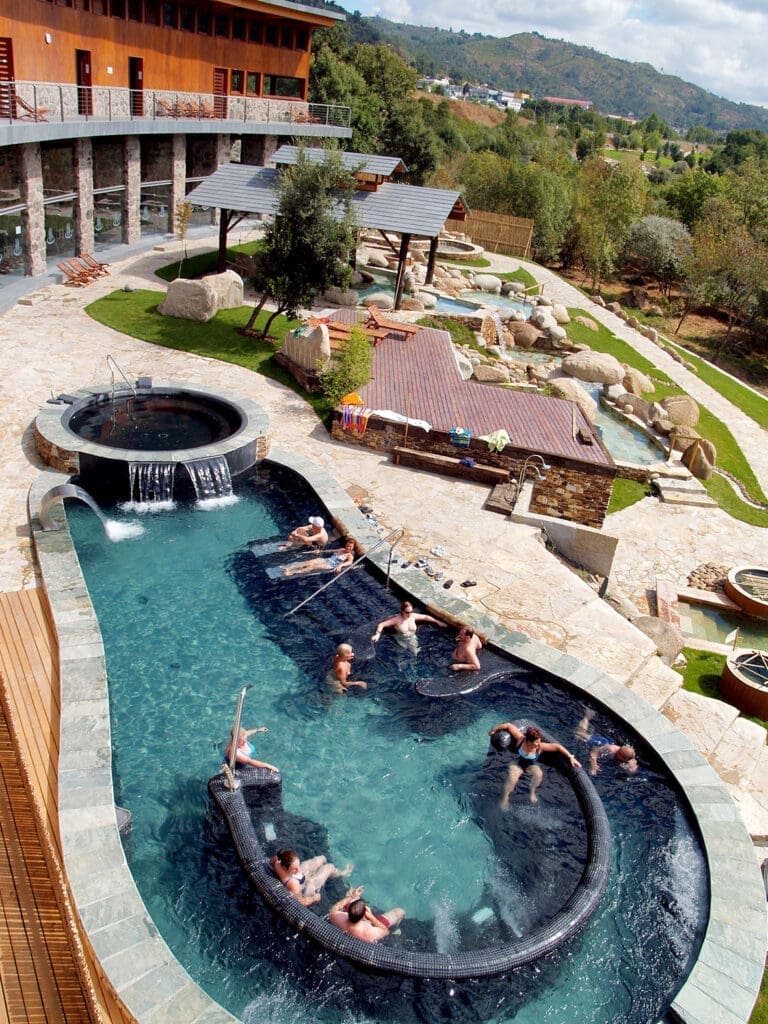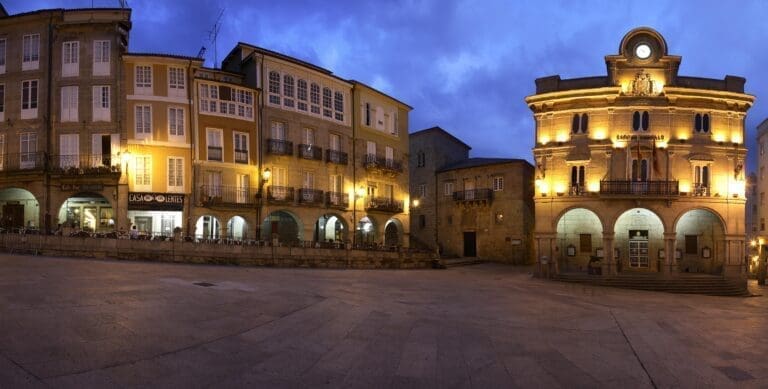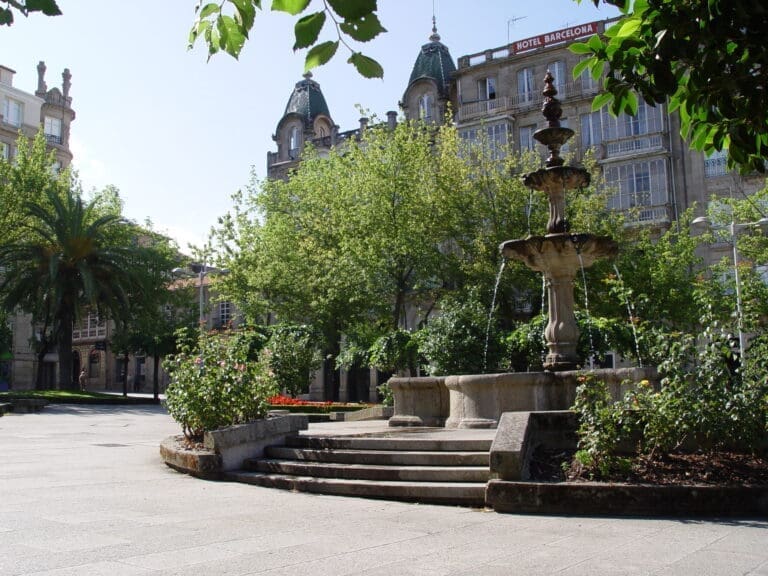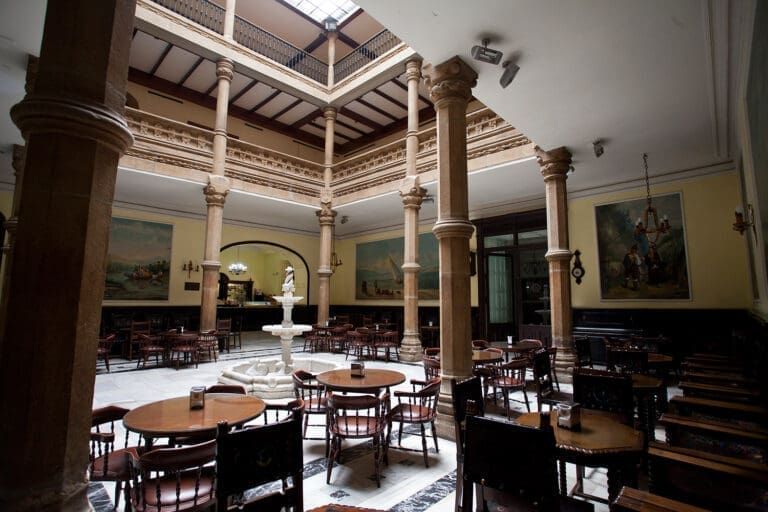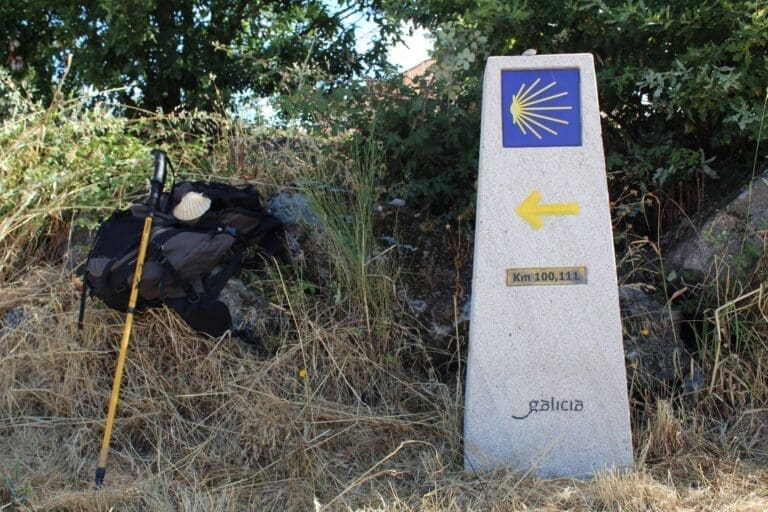This church belongs to the parish of Santa Eufemia del Norte, although it is commonly known as Santo Domingo, just like the street where it is located. It owes its name to an old Dominican convent, of which only the temple remains, active from the 17th century until the Disentailment (19th century). Its simple facade contrasts with the baroque altarpieces inside, gilded and with abundant polychromy.
Curiously oriented to the east, the facade has simple lines and ends in a belfry. It features a doorway framed by fluted pilasters and above them a pediment with a circular shield without carving and a royal crown. The interior has a Latin cross plan with a single longitudinal nave covered with ribbed vaulting and a dome on pendentives at the crossing. The main altar is the work of the Leonese sculptor Francisco de Castro Canseco, as are the striking altarpieces of the Rosary and San Jacinto, with the characteristic polychrome and gilding of the 18th century.

 Ourense, Galicia
Ourense, Galicia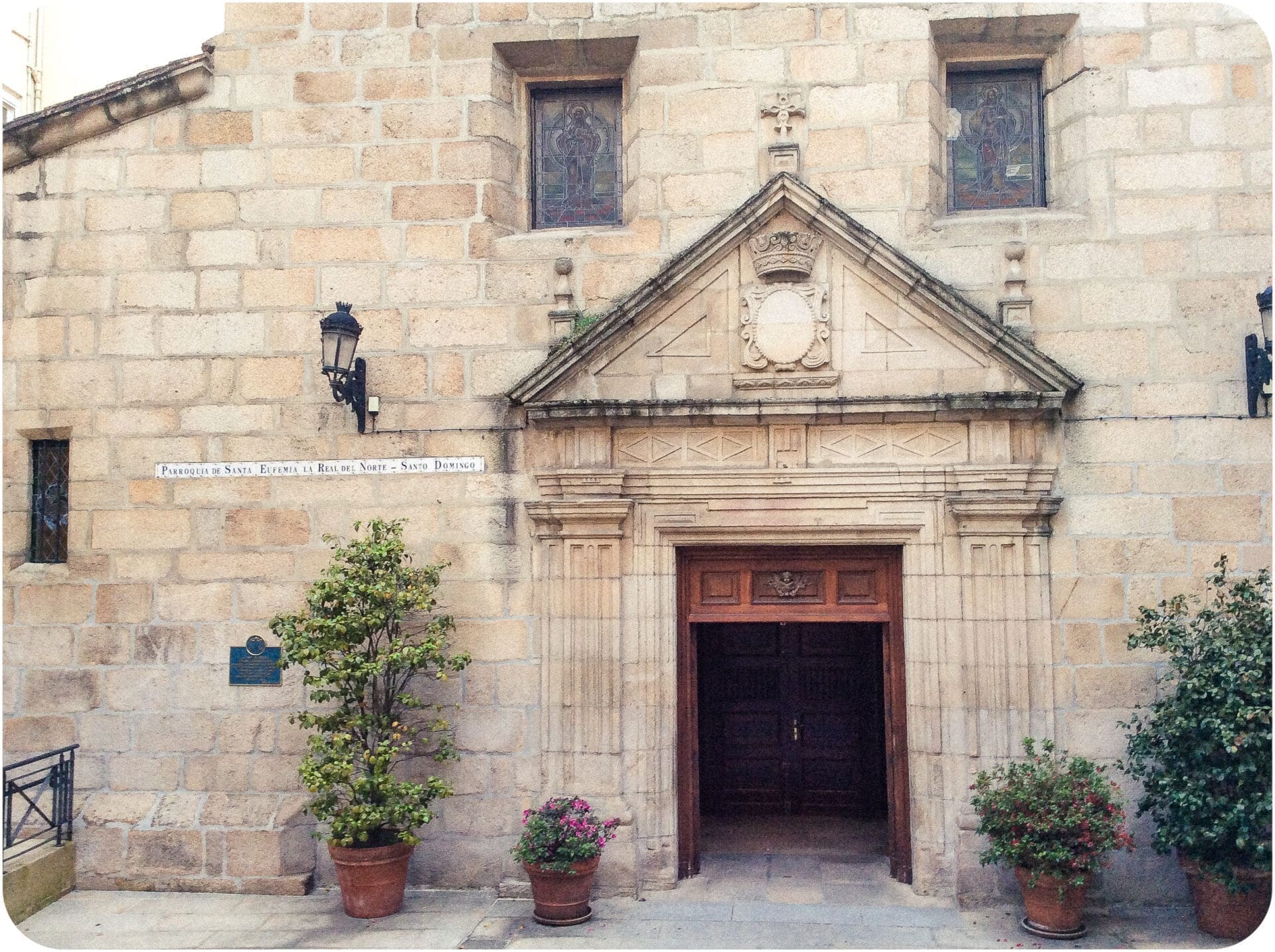


 Iglesia de Santo Domingo
Iglesia de Santo Domingo 